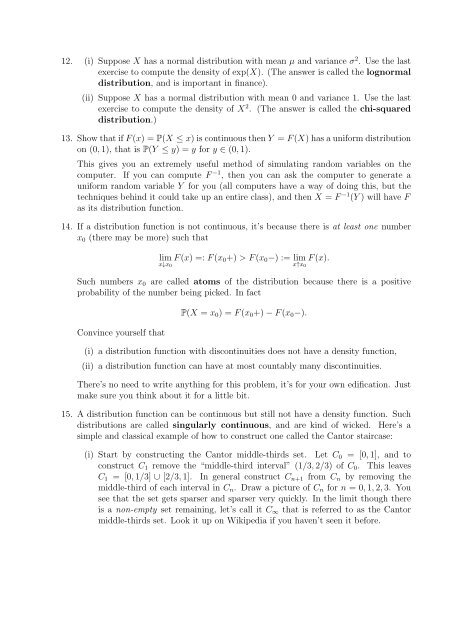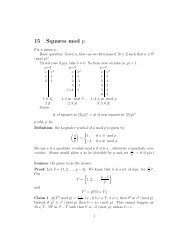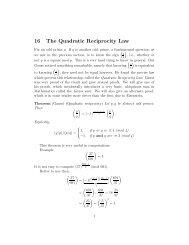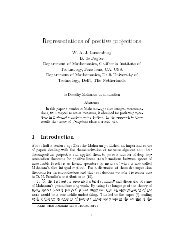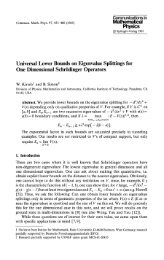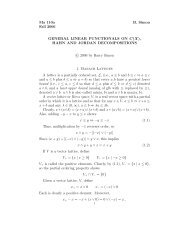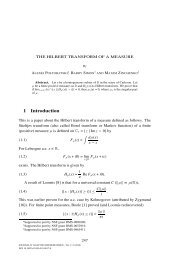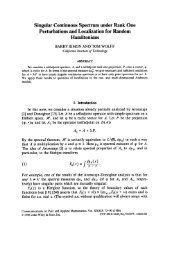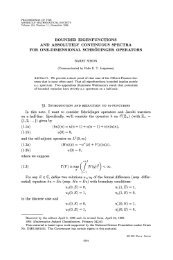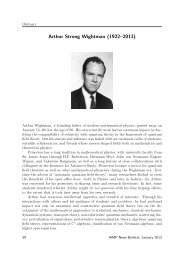Homework 1
Homework 1
Homework 1
Create successful ePaper yourself
Turn your PDF publications into a flip-book with our unique Google optimized e-Paper software.
12. (i) Suppose X has a normal distribution with mean µ and variance σ 2 . Use the last<br />
exercise to compute the density of exp(X). (The answer is called the lognormal<br />
distribution, and is important in finance).<br />
(ii) Suppose X has a normal distribution with mean 0 and variance 1. Use the last<br />
exercise to compute the density of X 2 . (The answer is called the chi-squared<br />
distribution.)<br />
13. Show that if F (x) = P(X ≤ x) is continuous then Y = F (X) has a uniform distribution<br />
on (0, 1), that is P(Y ≤ y) = y for y ∈ (0, 1).<br />
This gives you an extremely useful method of simulating random variables on the<br />
computer. If you can compute F −1 , then you can ask the computer to generate a<br />
uniform random variable Y for you (all computers have a way of doing this, but the<br />
techniques behind it could take up an entire class), and then X = F −1 (Y ) will have F<br />
as its distribution function.<br />
14. If a distribution function is not continuous, it’s because there is at least one number<br />
x 0 (there may be more) such that<br />
lim F (x) =: F (x 0 +) > F (x 0 −) := lim F (x).<br />
x↓x 0 x↑x0<br />
Such numbers x 0 are called atoms of the distribution because there is a positive<br />
probability of the number being picked. In fact<br />
Convince yourself that<br />
P(X = x 0 ) = F (x 0 +) − F (x 0 −).<br />
(i) a distribution function with discontinuities does not have a density function,<br />
(ii) a distribution function can have at most countably many discontinuities.<br />
There’s no need to write anything for this problem, it’s for your own edification. Just<br />
make sure you think about it for a little bit.<br />
15. A distribution function can be continuous but still not have a density function. Such<br />
distributions are called singularly continuous, and are kind of wicked. Here’s a<br />
simple and classical example of how to construct one called the Cantor staircase:<br />
(i) Start by constructing the Cantor middle-thirds set. Let C 0 = [0, 1], and to<br />
construct C 1 remove the “middle-third interval” (1/3, 2/3) of C 0 . This leaves<br />
C 1 = [0, 1/3] ∪ [2/3, 1]. In general construct C n+1 from C n by removing the<br />
middle-third of each interval in C n . Draw a picture of C n for n = 0, 1, 2, 3. You<br />
see that the set gets sparser and sparser very quickly. In the limit though there<br />
is a non-empty set remaining, let’s call it C ∞ that is referred to as the Cantor<br />
middle-thirds set. Look it up on Wikipedia if you haven’t seen it before.


